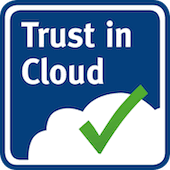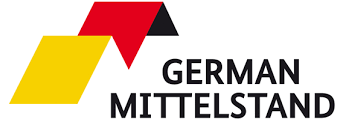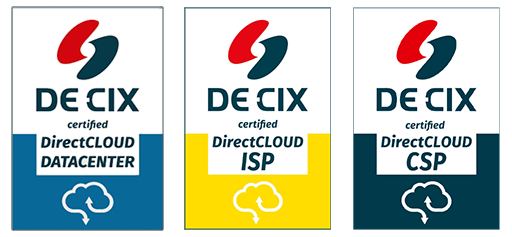Server leasing under HaaS model
Contents
It is not always profitable for a company to buy expensive hardware, investing a large amount of money at once and reprioritizing business tasks to close the financial hole. For example, what to do if you need to host servers in the EU without transporting your own facilities from across the ocean? Or you urgently need a server for a high-load project, but without capital expenditures?
Acquiring IT hardware is a serious step that requires investment and high costs. It often happens that a company needs to buy a server, but does not fit into the budget or does not have free funds. You can try to reduce the amount of resources required or rent a server with an option to buy it at residual value.
What is the benefit of leasing a server under the HaaS model
CloudKleyer offers an excellent solution under the HaaS model: long-term rent (leasing) of IT hardware, including telecommunication equipment, data storage systems, peripherals for a period of three years with buyout option. Payments are made according to an operating scheme of fixed or decreasing payments.
Classic leasing implies the presence of a third party that provides borrowed funds for the purchase of IT hardware. Cooperation with CloudKleyer brings maximum benefit to the client, as the contract is concluded directly, without the participation of intermediaries. Due to this, even the most complex projects are realized on a turnkey basis.
The cost of the service includes:
- free configuration and selection of hardware;
- connection;
- hosting;
- personal manager for each project;
- full multilingual technical support (responds within 15 minutes 24/7 by phone, e-mail, in messengers).
The lessee company receives the hardware, which it uses for the period of time specified in the contract. After the lease period expires, it can be purchased at residual value or replaced with a more modern one.
Who needs to lease hardware under the HaaS model
Leasing hardware to build IT infrastructure is beneficial for banks, financial organizations, large international companies, as well as companies operating in retail, oil and gas, energy, and gambling sectors.
Hardware leasing is necessary for those companies that are interested in:
- financial savings;
- transferring capital expenditures into operational expenditures;
- unloading the IT department, transferring routine tasks to our specialists;
- selection of custom solutions;
- easy scaling of hardware;
- guarantees of uninterrupted and secure operation.
In what situations server leasing is an excellent solution for business?
- Creating a test environment for hypothesis testing in the absence of a physical server of the required parameters. Purchasing a server in this case is financially unprofitable, as the capacity may not be used after the end of testing.
- New capacities and volumes are required to run highly loaded applications (DBMS, GPU, AI). In this case, there are two solutions: create a cluster in the cloud or rent 1-2 dedicated servers.
- Hosting large databases. In a cloud or virtual environment, the probability of conflict between them increases. When hosted on physical hardware, the DBMS operation speed increases by several percent.
- High disk performance requirements. If a company needs a bandwidth of at least 60-70 thousand IOPS, a server leased under the HaaS model can provide work with NVMe disks in different RAID arrays with reliable network connection without virtualization. This gives an increase in disk subsystem performance.
- Huge density computations are performed that do not provide full server utilization. If it is known where at least 90% of the resources are spent, it is more logical for a company to work under the HaaS model.
Advantages of long-term lease of a server with buyout option in CloudKleyer
CloudKleyer offers custom solutions and purchase of hardware from Cisco, HP, IBM, Juniper, Dell with the buyout option after three years. Our experience allows us to find the best solution for the client’s needs.
- Hosting in a Tier 3 data center in Frankfurt am Main, one of the largest European hubs of Internet communications. The data center is able to operate autonomously for up to three days due to its own generators. SLA 99.99%, high fault tolerance. Internet channel width from 100 Mb to 10 Gb (depending on contract terms).
- Lease of server space up to 900 square meters and scalable power supply capacity up to 8 kW. Hardware is hosted in secure rooms with individual power meters, in locked cabinets with strict access authorization. Biometric control is performed at the entrance to the data center premises. Security systems are monitored 24/7.
- Extended warranty and post-warranty service. During the warranty period spare components are supplied by the vendor from the warehouse in the shortest possible time. Replacement of components after the end of the warranty period is subject to the conclusion of a contract for post-warranty service. With small monthly payments (their size depends on the configuration of the hardware) provides full technical support with the restoration of any component (even the most expensive and obsolete one) at our expense within a day. This is beneficial to the server owner, as the search, purchase, delivery and replacement of components is the area of responsibility of the service provider.
- Using powerful resources with a minimal budget. During the entire lease term, the server is an asset of the lessee company, with full use of all its resources. The service of long-term lease with a buyout option is an opportunity to get the ownership of the most productive hardware without compromising finances. The financial burden is spread over 36 months.
- There is no need to freeze significant funds in your account. Getting hardware in leasing saves operating assets, optimizes taxation, modernizes IT infrastructure without capital expenditures. Since leasing payments are formalized as expenses, the tax burden is reduced. Savings on VAT is 14-30%. The initial payment is no more than 2-3% of the total cost of the server.
- Payment under the model of fixed payments. An individual leasing agreement with flexible payment terms is developed for each client. In any case, the loan body is repaid first, not the interest. The real cost of the server is specified at the moment of signing the contract and does not change even if the cost of the hardware rises. The client receives a new server, for which he pays the amount in equal installments without credit rate and overpayment, i.e. long-term lease with the buyout option is in fact a negative payment. At the same time, the company reduces income tax, as the lease payments are considered as expenditures.
- Server capacity, taken on long-term lease, can be resold, subleased, and the income received can be used to cover lease payments.
- Availability of CloudKleyer branches all over the world.
Example of calculating the cost of lease with buyout option
In a typical server lease with a buyout option, the contract is concluded for three years. You don’t have to pay the full price at once, but split it up over the entire term, after the end of which the lease object is redeemed at the residual value.
For example, DL380a Gen11 server with four NVIDIA H100 GPUs can be purchased for a one-time payment of €133,411. The required amount is not available, so a decision is made to lease a server of the same configuration.
- A one-time first payment of 3% of the total cost will amount to €4,002. It includes the provider’s services for hosting, connection and maintenance of the server.
- Monthly payment for 36 months is €2,668.
- In three years, it is possible to sign a purchase agreement for the remaining redemption amount of €33,361. Then two contracts are signed: for colocation (rack rental, Internet and IPv4) and technical support.
The financial expenses of a company that has already paid for the server are reduced by more than 60%.
Servers are managed by the client at the level of physical hardware with the possibility of installing virtualization systems, consolidating servers, connecting them to network hardware and data storage systems.










